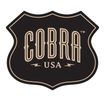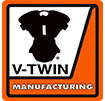www.denniskirk.com
800-969-7501
How to Remove and Replace a Snowmobile Track
How to: remove &
replace snowmobile track
So often snowmobilers decide to just deal with a worn out snowmobile track or one that doesn't suit their style of riding. The thought of swapping out a snowmobile track seems to be a daunting task that many riders put off until they are forced to deal with it. If you choose this route, you will not only lose out on the performance gains of a new snowmobile track, but you are also putting yourself in danger if you are riding with a worn out or damaged track. Do a video search for track blow-outs and you will see for yourself.
Anyone with a basic understanding of their snowmobile, has an open work space, some tools and a little patience can swap out their own snowmobile track. In order to get your old track off, you will need to remove your rear suspension, some parts under the hood and the drive shaft. This may sound like a lot, but once you start knocking out the individual steps, the process will move along nicely. Some snowmobiles will require some extra or less steps, but the process below should be a good start for all snowmobiles.

Steps to Remove & Replace Snowmobile Track
Step 1 Remove Rear Suspension
If you have never removed your rear suspension before, this step may seem to be a large task. Luckily though, it is actually quite simple to do. To begin, you will either need to lift the back of the snowmobile by the bumper or tip the sled on its side so that there is no pressure on the suspension. Also be sure that there is enough room to swing the suspension out. If you are tipping your sled on its side, make sure that you remove the battery so that it will not spill.
With the sled lifted or on its side, the first thing that you will need to do is to take the tension off of the track by backing off the tension bolts. Next, remove the bolts that hold the front and rear suspension arms to the snowmobile chassis. Depending on the snowmobile, there may also be bolts that hold idler wheels to the chassis. It's important that while you remove these bolts that you do so in a stepped pattern. In other words, loosen each one little by little, rotating between the bolts. If one is taken out by itself, the opposite bolt can become misaligned and be left spinning. An impact works well for this if you have one as it will help to prevent the opposite bolt from spinning. Make sure that the skid is supported before dropping it down.
Now you should be able to pull the suspension skid out of the track. If it is still too tight, you can release the tensioner springs, which will allow you to compress the skid even further.
Step 2 Remove Any Parts Blocking Chaincase Cover
Your next step will be to remove the chaincase cover, but first you must remove all of the parts under the hood that are blocking access to the chaincase. These parts could include the exhaust, battery and battery tray. An exhaust spring puller makes removing the exhaust much easier than using another tool, such as a pliers. If your snowmobile has a battery, remove the battery cables and move them aside. Next, take off the battery strap and remove the battery. If you had to tip your sled for the previous steps, the battery should have already been removed. With the battery out, remove the battery tray.
Step 3 Remove Chaincase Cover
Now that you have removed the parts blocking your access, you can now begin to remove the chaincase cover. If the chaincase on your snowmobile has a drain plug, you will need to drain the chaincase oil through that first. If it does not have a plug, you will need to place your drain pan underneath the belly pan and have several rags handy to clean up the extra chaincase oil.
On top of the chaincase there should be a filler plug that you will need to remove. Now you can begin to remove the chaincase cover by removing the bolts. Clean up the oil in the belly pan after you have removed the cover.
Step 4 Remove Chaincase Tensioner and Gears
With the cover removed, you now have access to the inner workings of the chaincase. Here, you will first need to remove the chain tensioner. Loosen the locknut that is on the tensioner and loosen the adjuster bolt to create slack in the silent chain. With slack in the chain, you can now remove the bolt that holds the tensioner arm in place and remove the tensioner.
Next, turn your attention to the chaincase gears. For some snowmobiles, you will only have to remove the lower gear, while others will require you to remove both gears. If you are not sure, just remove both gears now. To start, remove the bolt and washer that holds the upper gear in place. Next remove the circlip on the lower gear by using a snap ring pliers. You can now slide the gears and silent chain off of the driveshaft and jackshaft. There will be a countershaft spacer on the jackshaft that you will need to remove as well.
Step 5 Remove Secondary Clutch/Brake Components
The chaincase side of the drive shaft should now be clear. Next you will need to move to the belt side of the sled. You will need to first remove the belt guard, which is usually done by pulling the retaining pins. For more room, you may have to remove the secondary clutch and belt as well, depending on your snowmobile model.
If the brake components need to be removed, you now can remove the screws that hold the disc brake guard to the sled chassis. To begin removing the brake caliper bracket, first align the caliper bracket screws with the brake disc slots by turning the driven pulley. Now you can remove the bracket screws and then the bolt that holds the caliper to the chassis. Move the bracket out of the way. To remove the disc off of the shaft splines, you will need to first remove the circlip that is holding it on.
Now, remove the bearing carrier off of the drive shaft by removing the bolts that hold it on. You may have to disconnect the speedometer cable from the carrier. There should be a key inside that operates the speedometer and that will also need to be removed.
Step 6 Remove Drive Shaft & Old Track
With the previous steps completed, you can now remove the driveshaft. You will have to go under the sled to access the driveshaft. To remove it, slide the shaft toward the chaincase side until the opposite side of the shaft drops out. You can now pull out the driveshaft. There will be a bearing flange between the driveshaft and tunnel that you will need to remove. With the driveshaft out, the old track will now be free and can be pulled away.
Step 7 Inspect Suspension, Drive & Brake Components
With everything removed, you should inspect all of the components that you have removed. These components are not normally inspected on a regular basis so you should take advantage of them being out. First, take a look at your rear suspension skid. Ensure that the shocks and springs are operable. Check to make sure the limiter straps are solid and that the slides are still thick enough. Also check to make sure that wheel bearings spin freely. If you haven't greased the suspension in a while, now is a good time to do so.
Next, take a look at the drive components. Are the splines on the driveshaft straight? Check the teeth on the chaincase gears and take a look at the silent chain. Also, check to make sure that the cog drivers are solid.
If you had to remove the brakes, take a look to see if the pads or rotor need to be replaced. Make sure the brake lines are not cracked.
Step 8 Install New Track
If all of the removed components check out, you can move on to install the new track. Line the track up with the tunnel. Then, slide the driveshaft into the track. Make sure that you align the drive lugs and windows with the cog drivers.
Step 9 Install Remaining Parts in Reverse Order of Removal
With the new track aligned on the drive shaft, you can begin reinstalling all of the parts in the reverse order that you took them off. Start by installing the drive shaft. Be sure that you insert the shaft with the bearing side first. Once the drive shaft is installed, continue installing the remaining parts in the reverse order of removal.
Make sure that you refill the chaincase with the recommended oil.
Step 10 Test & Adjust
Now that you have everything back together, it's time to test your work. You will need the track lifted off of the ground to do so. With the rear end lifted, start the sled and slowly engage the clutches to turn the track. Make sure that there is nothing rubbing and that all of the parts are working as they should. If everything checks out, tighten the track tensioners to set the right amount of track sag according to the manufacturer's recommendations.
















